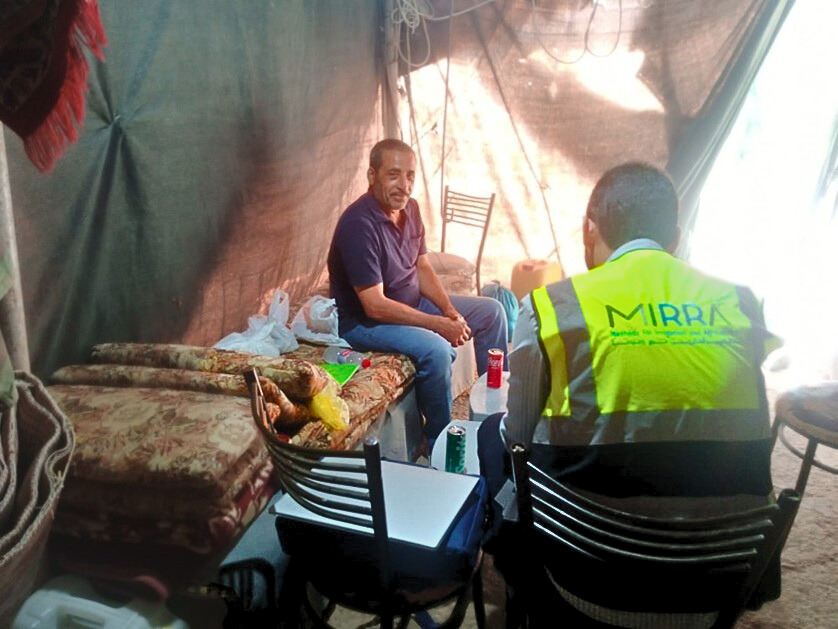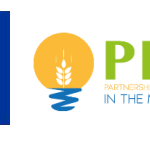 06 August 2025
06 August 2025Enhancing Food Security Through Piloting Agroecology Practices and Capacity Building
Enhancing Food Security Through Piloting Agroecology Practices and Capacity Building

United Nations Development Programme
The Challenge In Azraq
Azraq lies to the east of Jordan in an arid portion of the country but also boasts local agriculture and fertile soil that makes use of limited surface and groundwater resources. However, over the past several decades of intensive agriculture, the groundwater table of Azraq region is quickly declining which places great stress on agriculture productivity and profitability for the local community. Farmers have begun to abandon their farming operations in the face of harsher climate conditions and rising costs of agriculture production. The highlands face only 60mm of average annual rainfall, a declining groundwater table, and unsustainable exploitation of diminishing groundwater resources to supply current agricultural activities. The fast rate of groundwater consumption not only depletes groundwater aquifers but also increases the salinity of the remaining water, and by extension, the salinity of the soil once this water is extracted and applied in irrigation. This region of Jordan faces considerable limitations on financing and investment which limits the community’s options for creating sustainable, resilience methods of agriculture. The purpose of this project is to remedy this challenge by introducing agroecology practices to farmers to improve the soil health, the soil’s water retention, and advance water conservation practices.
Place of Impact
Project Timeline:
February 2022
–
January 2023
Beneficiaries:
40
Small Farms
Project Summary:
The primary output of this project is an enhanced food system in Azraq, Jordan capable of providing a more resilient source of food and livelihood for the rural population. Agroecology is a sustainable and environmentally-oriented method of food production that yields agricultural, social, and economic benefits. Agroecology involves several core principles: nutrient and energy recycling, avoiding external inputs of fertilizers and herbicides, plant diversification, enriching biological soil activity, and integra ng livestock into crop cultivation. These practices aim to improve the biodiversity and overall soil ecological health as a way of supporting agricultural production. Agroecology is a versatile method of agriculture that may be applied in a variety of climates and ecosystems, including the water-scarce, arid environment of Eastern Jordan. Agroecology has not been applied extensively in Azraq, Jordan. Consequently, farmers lack the knowledge and experience to implement these methods effectively. This project had four objectives:
1. Enhance food security through the improvement of agriculture production systems
2. Improve and facilitate communication between farmers, private and public organizations
3. Raise farmers’ awareness of affordable and replicable agroecology practices such as intercropping and crop rotation
4. Educating farmers to become better decision-makers on their land, crop, and water management practices.
To achieve these objectives, six outcomes for implementing agroecological practices were achieved over the course of six months of field work:
1. Crop Rotation
2. Intercropping
3. Biological pest control
4. Drip irrigation with inline, low-pressure emitters
5. Organic fertilizer
6. Direct seeding into biodegradable mulch.
Each of these outcomes provided vital input towards achieving the project’s stated output of climate resilient food system based on more sustainable, agroecological methods










Previous
Next
Implementation
Baseline Data Collection
-
Conducting interviews and workshops with farmers
-
Initial farm water audit
-
Water source condition and water testing
-
Soil tests for nitrogen, potassium, phosphorus, pH, and electrical conductivity
-
Evaluating soil organic matter and physical characteristics
Irrigation and Agroecology System Design
-
Irrigation System design and installation in cooperation with farmers
-
Design of crop rotation and intercropping patterns
Preparation of Demo Site
-
Purchasing seeds
-
Cultivating the demo site
Capacity Building Program
-
Adapting farmer field school day curriculm to farmers’ needs and exisiting knowledge
-
Training farmers on six agroecology techniques: crop rotation, intercropping, biological pest control, drip irrigation, organic fertilization, direct seeding into living cover crops or mulch
Project Activities:
This project consisted of initial stakeholder workshops to hear from farmers’ experiences and challenges in Azraq with a gender-mainstreaming lens to target women’s voices. These workshops were followed-up with on-farm audits of irrigation systems to better quantify the needs of farmers in Azraq and co-develop interventions. MIRRA staff implemented a variety of agroecology 2 methods on four different pilot sites in Azraq followed by capacity building initiatives to train farmers on these techniques and disseminate results to the wider community via farmer field school days.

Project Relevance
High-water salinity from a decreasing water table, high energy costs, and a lack of support from the government and agriculture cooperative threatens their livelihoods as well as the region’s wider financial stability and food security. MIRRA’s agroecology technologies directly address each of these challenges making them relevant interventions for farmers in Azraq.

Project Coherence
This project by UNDP coheres and reinforces MIRRA’s previous project in Azraq. MIRRA supplied drip irrigation systems and magnetic water devices for controlling water salinity to two farms in Azraq which accomplished a 30-40% reduction in energy for groundwater pumping as well as a 35% reduction in water consumption. Accompanied by field training that hosted more than 40 farmers and a summer school that trained 15 youth on innovative technologies and sustainable agriculture.

Project Impact
MIRRA implemented 6 different agroecology methods to four farms in Azraq. These methods impacted agriculture practices in three primary ways: water conservation, energy reduction, and improving the soil ecology on each farm. The farmers at each of the four pilot sites demonstrated these technologies to other members of the community thereby achieving a larger, indirect set of farmers who received greater awareness and knowledge about the impact of agroecological methods for more sustainable agriculture.
Proof Of Effectiveness
Via Distribution Uniformity Comparison
Farm 1
Conventional DU Ratio
96.1%
Experimental DU Ratio
91.8%
Farm 2
Conventional DU Ratio
90.5%
Experimental DU Ratio
98.2%
Farm 3
Conventional DU Ratio
93.5%
Experimental DU Ratio
93.1%
Farm 4
Conventional DU Ratio
80.2%
Experimental DU Ratio
92.2%





Previous
Next

Project Effectiveness
Effects of Objective 1:
MIRRA staff were able to prepare each demo site for the installation of new technologies and to design intercropping and crop rotation systems. Five different agroecological practices were implemented: crop rotation, intercropping, biological pest control, organic fertilizer, direct seeding into biodegradable mulch. Farms received improvements to their infrastructure including low-pressure drip irrigation systems.
Effects of Objective 2:
MIRRA visited 19 different farms and conducted a complete audit of each farm’s irrigation system for greater stakeholder engagement and data collection to ensure farmers’ unique perspectives and needs were taken into consideration while designing agroecology interventions for each farm. MIRRA then hosted two workshops: The first workshop was hosted on a small farm while the second workshop was hosted by the Azraq Women’s Cooperative Society. In each of these workshops, farmers participated in open discussions about their experiences, challenges, and desires for change in their farming operations.
Effects of Objective 3:
MIRRA implemented agroecology techniques on four different test sites in Azraq. Each of the pilot sites conducted their own farmer field school where they introduced the project objectives and gave tours of the agroecology methods installed on their farms.
Effects of Objective 4:
Each farmer participating in the project received approximately 7 months of training in the agroecology techniques installed on their farms. This project not only invested in new agriculture techniques but ensured each farmer was trained on how these techniques work.






